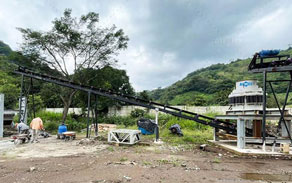


Discover 2025 quarry startup costs, stone crusher plant prices, and key investment insights for profitable operations.
Launching a quarry business in 2025 requires more than a vision and a rock-solid work ethic. It demands financial planning, a clear understanding of equipment investments, and an appreciation for the operational nuances of a stone-crushing venture. At the heart of this enterprise lies the stone crusher plant—a foundational asset that shapes productivity, efficiency, and profitability. While the price tag may vary based on location, scale, and technology choices, the overall cost spectrum provides crucial insight into the capital one must marshal to transform raw terrain into a revenue-generating quarry.
In this breakdown, we’ll explore the key capital requirements, dive into current stone crusher plant price trends, and spotlight long-term cost considerations every new quarry owner should budget for.
Before the first boulder is broken, there’s ground to secure. Land prices fluctuate wildly based on geography, proximity to markets, and legal constraints. In rural regions of developing countries, land may be acquired for as little as $20,000. In high-demand zones near urban centers, expect valuations exceeding $200,000.
Once secured, **site preparation** begins—clearing vegetation, building access roads, conducting geological surveys, and stabilizing terrain. This phase alone can demand an additional $30,000 to $100,000, especially if blasting is needed to expose mineral-rich deposits.
At the core of any quarry lies its machinery. In 2025, the cost of a **quarry crusher plant** varies based on capacity and configuration:
Each plant typically includes primary crushers (jaw/impact), secondary crushers (cone/impact), screening units, conveyors, and control systems. Additional costs for steel structures, foundation works, and power supply installation can add $50,000 to $150,000 to the total setup.
Technology is rewriting the rules of crushing. In 2025, smart automation, energy-efficient motors, and hybrid power options are more prevalent than ever. These features, while increasing upfront costs, offer long-term savings and boost resale value.
For instance, a fully automated 120 t/h plant equipped with AI-driven monitoring and variable frequency drives may cost $20,000 more than a basic counterpart—but can reduce annual energy consumption by 15% or more. As environmental standards tighten globally, such systems are no longer luxuries—they’re smart investments.
Where you buy matters. Manufacturers in China, India, and Turkey continue to offer **competitive pricing**, often 30–50% lower than European or North American brands. However, import duties, shipping costs, and after-sales support can tip the scales. In regions like Southeast Asia, local production is catching up fast, offering a balance of affordability and support.
Buyers should consider not just unit price, but **total cost of ownership**—including maintenance, parts availability, and long-term service reliability.
Regulatory compliance is non-negotiable. Quarry businesses must obtain land use permits, environmental clearance, emissions certification, and operational licenses. The cost of compliance varies from $10,000 to $50,000 depending on the region and complexity of assessments.
Skipping this step isn’t just risky—it’s catastrophic. Violations can lead to plant shutdowns, penalties, or legal entanglements that cripple operations.
Beyond the upfront costs lies a tide of ongoing expenses. Fuel or electricity for daily operations, regular equipment maintenance, workforce wages, insurance, security, and waste management are all recurring budget items. For a mid-sized plant, monthly operating costs can range from $20,000 to $50,000.
There are also hidden gremlins: unscheduled downtime, machinery wear and tear, and unpredictable market shifts in aggregate prices. Smart quarry managers keep a reserve fund—typically 10–15% of the initial capital—to weather these storms.
Starting a quarry business in 2025 is a formidable yet rewarding endeavor. With an initial investment typically ranging from $300,000 to over $1 million depending on scale and ambition, success hinges on foresight, planning, and a firm grip on both visible and invisible costs. The stone crusher plant remains the heartbeat of the operation, and choosing the right setup today means paving the way for sustainable profits tomorrow.
